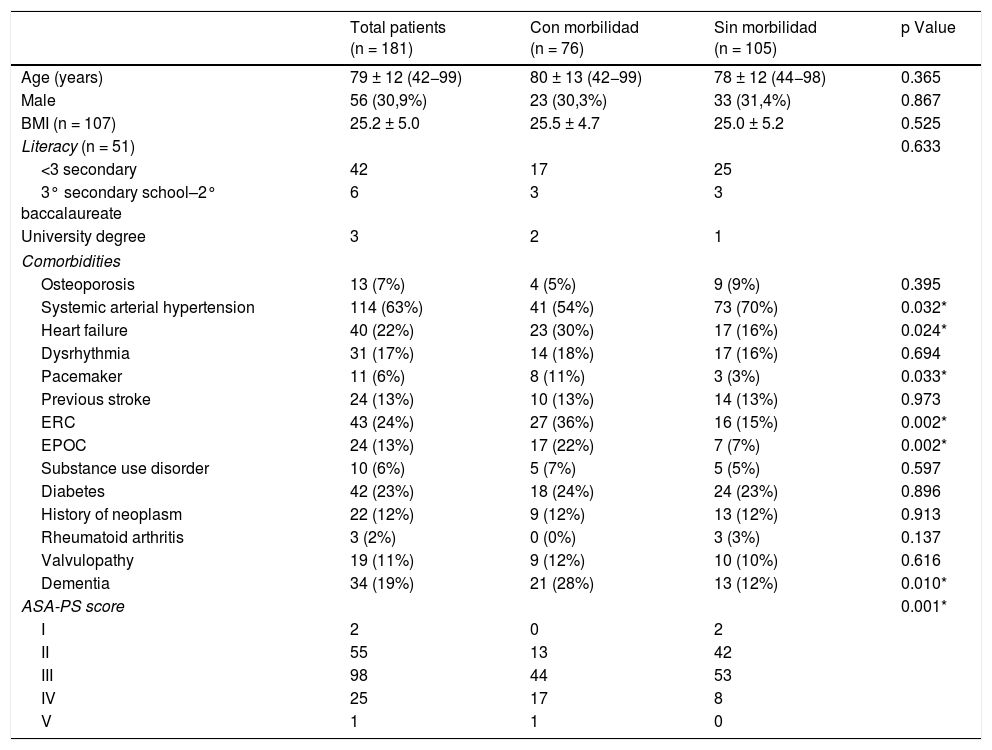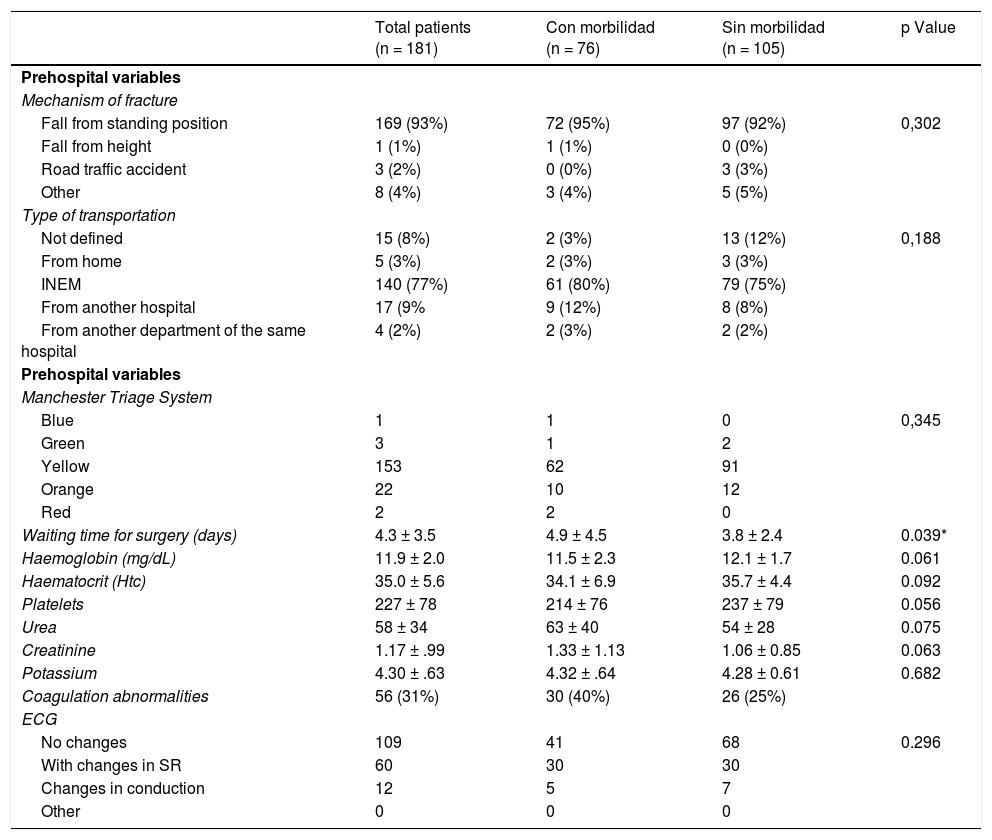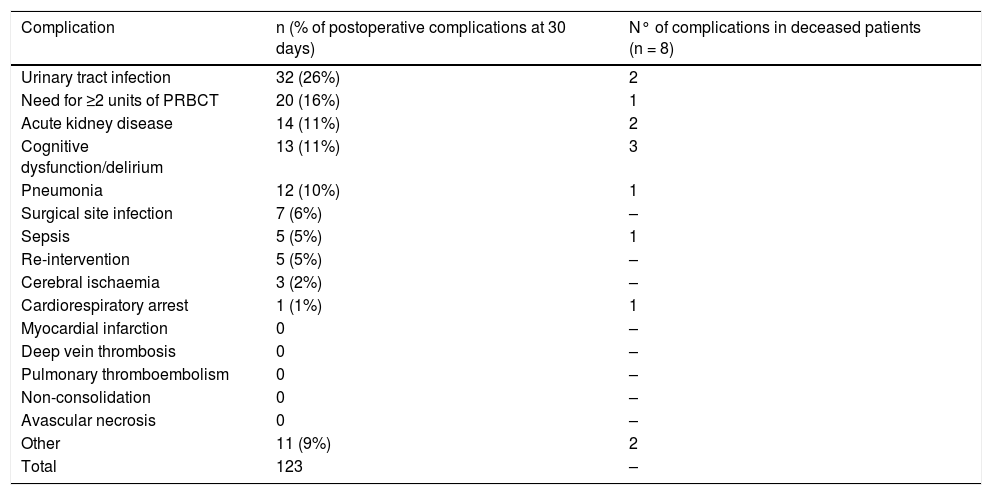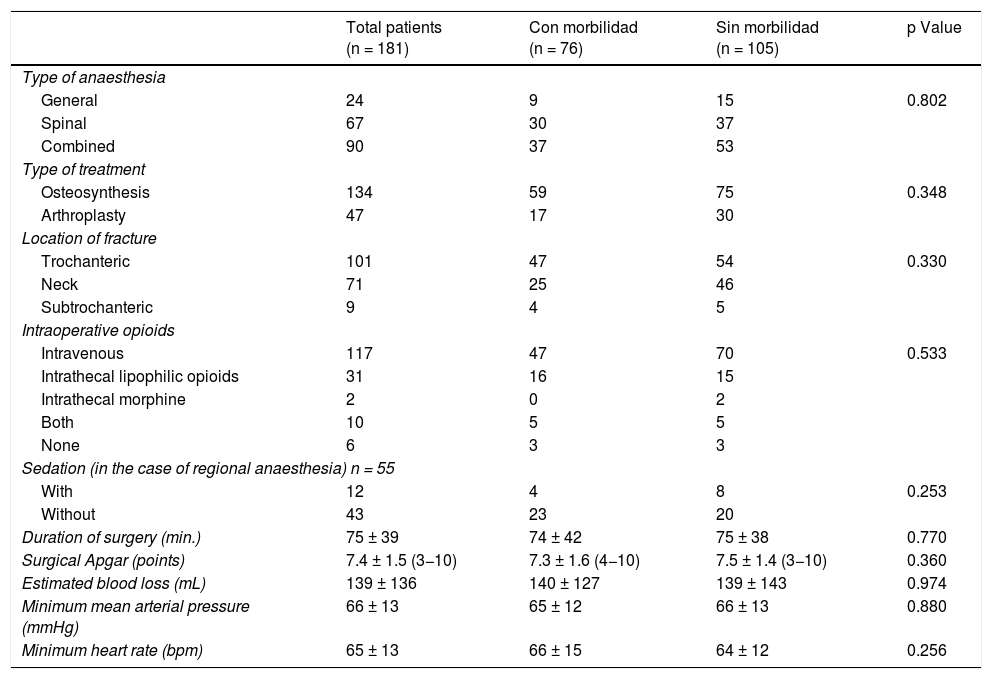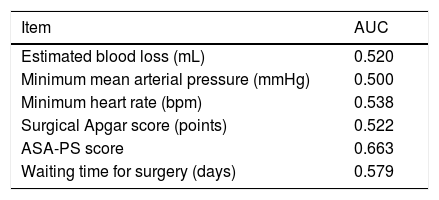The surgical Apgar score (SAS) is a perioperative risk evaluation score, which considers intraoperative minimum heart rate, minimum mean arterial pressure and estimated blood loss. Although validated in multiple surgical fields, SAS remains quite controversial in the orthopedic one. The main purpose of this study was to investigate if SAS relates with the occurrence of complications during the first 30-days after proximal femoral fracture surgery.
MethodsRetrospective study including all consecutive patients submitted to proximal femoral fracture surgery between January and July 2019. Patients with no information about SAS were excluded. Patients were divided in two groups, based on the occurrence of complications during the first 30 post-operative days and their SAS calculated. Receiver operating characteristic (ROC) curves were used to assess SAS power as a predictive model of complications.
ResultsForty-two percent (n = 76) of the 181 patients included in the study developed complications during the first 30 postoperative days. Eight patients (4,4%) died during that period. The patient’s mean age was 79 years and 30,9% (n = 56) were men. Heart failure, pacemaker use, chronic kidney disease, chronic obstructive pulmonary disease and dementia were significantly associated with post-operative morbidity. There was no significant correlation between SAS and the occurrence of complications during the first 30 postoperative days. The AUC of SAS as a predictive model for postoperative complications after proximal femoral fracture surgery was 0,522, being insufficient to be considered an accepted model of prediction.
ConclusionBased on this study, we conclude that SAS is not predictive of the development of complications in the first 30 post-operative days in patients submitted to proximal femoral fracture surgery. However, other clinical factors have been identified as associated with postoperative morbidity. In the future, prospective-based studies with higher samples may better clarify the role of SAS in this context.
El Apgar quirúrgico (AQ) es una puntuación evaluadora del riesgo perioperatorio, que evalúa intraoperatoriamente la frecuencia cardiaca mínima, la presión arterial media mínima y la pérdida de sangre estimada. Aunque ha sido validado en múltiples campos quirúrgicos, el AQ sigue siendo controvertido en el campo traumatológico. El objetivo principal de este estudio fue investigar si AQ guarda relación con la incidencia de complicaciones durante los primeros 30 días tras la cirugía de fractura femoral proximal.
MétodosEstudio retrospectivo que incluyó todos los pacientes consecutivos sometidos a cirugía de fractura femoral proximal entre enero y julio de 2019. Se excluyó a los pacientes que carecieran de información sobre el AQ. Se dividió a los pacientes en dos grupos, sobre la base de la incidencia de complicaciones durante los primeros 30 días postoperatorios y el cálculo de su AQ. Se utilizaron curvas ROC (característica operativa del receptor) para evaluar el modelo predictivo de complicaciones.
ResultadosEl 44% (n = 76) de los 181 pacientes incluidos en el estudio desarrollaron complicaciones durante los primeros 30 días postoperatorios. Ocho pacientes (4,4%) fallecieron durante dicho periodo. La edad media de los pacientes fue de 79 años, y el 30,9% (n = 56) fueron varones. La insuficiencia cardiaca (IC), el uso de marcapasos, la enfermedad renal crónica, la enfermedad pulmonar obstructiva crónica y la demencia estuvieron significativamente asociadas a la morbilidad postoperatoria. No existió correlación significativa entre AQ y la incidencia de complicaciones durante los primeros 30 días postoperatorios. El ABC de AQ como modelo predictivo de complicaciones postoperatorias tras la cirugía de fractura femoral proximal fue de 0,522, lo cual es insuficiente para poder considerarse un modelo predictivo aceptado.
ConclusiónSobre la base de este estudio, concluimos que AQ no es predictivo del desarrollo de complicaciones en los primeros 30 días postoperatorios en pacientes sometidos a cirugía de fractura femoral proximal. Sin embargo, se han identificado otros factores clínicos asociados con la morbilidad postoperatoria. En el futuro, los estudios de tipo prospectivo con muestras de mayor tamaño podrán esclarecer de mejor manera el rol de AQ en este contexto.







